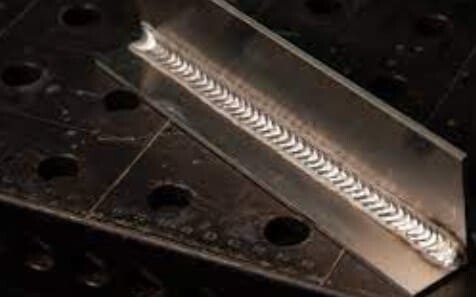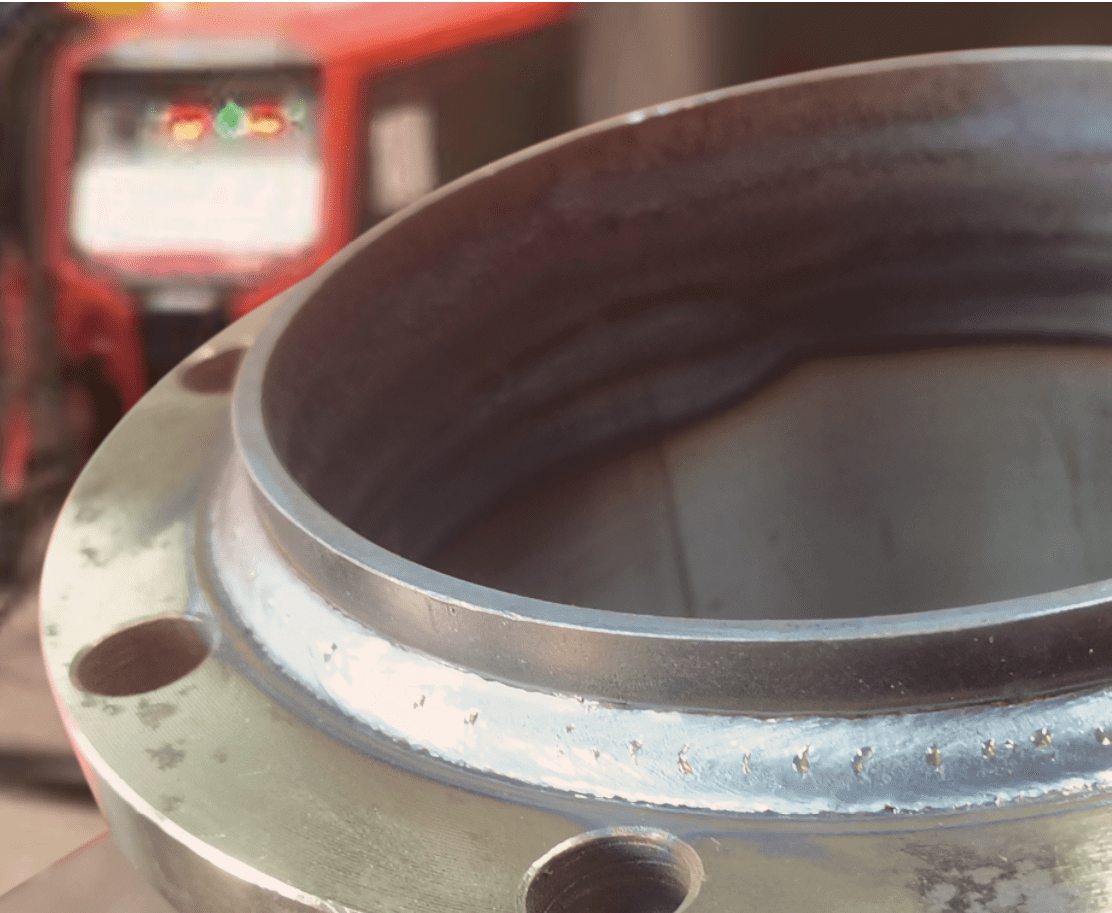In the ever-evolving world of welding, innovation and precision are the driving forces behind advancements in metal fabrication. Among the various welding techniques, Pulsed MIG welding has emerged as a game-changer, particularly for materials like stainless steel. This method combines the efficiency of MIG welding with the precision of pulsed current technology, offering unmatched results in both industrial and precision welding applications.
In this article, we’ll explore the intricacies of Pulsed MIG welding for stainless steel, its benefits, and how it is revolutionizing the welding industry. Whether you're a seasoned fabricator or a newcomer to the field, understanding this technique can unlock new possibilities for your projects.

I. What is Pulsed MIG Welding?
Pulsed MIG welding is an advanced version of the traditional MIG (Metal Inert Gas) welding process. Instead of using a continuous current, this technique employs a high-speed pulsing current that switches on and off rapidly. This pulsation allows for precise control over heat input, making it ideal for welding delicate or high-value materials like stainless steel.
The process involves:
A power source that generates pulsed current.
A wire feeder that delivers the welding wire at a controlled speed.
A welding torch that directs the wire and current to the workpiece.
By adjusting the pulse frequency and duration, welders can achieve greater control over the arc, penetration, and weld pool formation. This level of precision is particularly beneficial when working with stainless steel, a material known for its corrosion resistance but also its sensitivity to heat input.
II. Why Pulsed MIG Welding is Perfect for Stainless Steel
The unique characteristics of Pulsed MIG welding make it an ideal choice for stainless steel applications. Here are some of its key advantages:
1) Enhanced Control and Precision
Consistent Welds: The pulsating current ensures uniform deposition of the weld metal, resulting in consistent and high-quality welds.
Reduced Distortion: By controlling heat input, Pulsed MIG welding minimizes warping and distortion, preserving the structural integrity of the stainless steel.
2) Reduced Heat Input
Stainless steel is sensitive to excessive heat, which can lead to oxidation and the formation of unwanted compounds. Pulsed MIG welding addresses this challenge by:
Regulating Heat: The pulsating current allows for precise control over heat input, preventing overheating and ensuring a stable welding process.
Preventing Oxidation: The controlled heat input reduces the risk of oxidation, preserving the material's corrosion resistance.
3) Minimized Spatter and Fumes
Cleaner Welds: The pulsating action reduces spatter, leading to cleaner welds and less post-weld cleanup.
Healthier Environment: Reduced fume generation creates a safer working environment, which is especially important in industries with strict safety regulations.
4) Increased Efficiency and Productivity
Faster Welding Speeds: The optimized heat input and consistent weld quality allow for faster welding speeds without compromising results.
Less Downtime: With reduced spatter and cleanup, welders can focus more on the task at hand, increasing overall productivity.
5) Versatility in Applications
Pulsed MIG welding is adaptable to various stainless steel thicknesses and joint configurations, making it suitable for:
III. Techniques for Mastering Pulsed MIG Welding for Stainless Steel
While the benefits of Pulsed MIG welding are undeniable, mastering the technique requires a combination of skill, knowledge, and practice. Below are some tips and best practices to help you achieve optimal results:
1) Optimal Parameter Settings
The success of any welding process depends on the right settings. For Pulsed MIG welding stainless steel, consider the following:
Pulse Frequency: A higher frequency (e.g., 100-300 Hz) is often used for stainless steel to achieve a smooth, stable arc.
Duty Cycle: Adjust the duty cycle to control the average current and heat input. A lower duty cycle reduces heat input, making it ideal for thin materials.
Wire Feed Speed: Ensure the wire feed speed matches the welding current to maintain a consistent arc.
2) Choosing the Right Shielding Gas
Shielding gas plays a critical role in maintaining weld quality and preventing oxidation. For stainless steel, a combination of Argon (Ar) and Carbon Dioxide (CO2) is often used. However, pure Argon is preferred for thinner materials to minimize heat input and oxidation.
3) Wire Selection
The choice of welding wire is equally important. For stainless steel welding, use a wire with a composition that matches the base material to ensure compatibility and durability. Common choices include ER308L, ER309L, and ER316L wires.
4) Cleanliness is Key
Stainless steel is highly sensitive to contamination. Always clean the base material thoroughly before welding to remove dirt, oil, or moisture. Use a wire brush or grinder to remove any surface impurities that could compromise the weld quality.
5) Welding Technique
Maintain a consistent travel speed and hold the welding torch at the optimal angle (usually between 10° and 20°). For Pulsed MIG welding, a slight push technique works best for stainless steel, as it helps dissipate heat evenly and prevents warping.
IV. Challenges and Solutions in Pulsed MIG Welding
Like any welding process, Pulsed MIG welding comes with its own set of challenges. Being aware of these and knowing how to address them can help you achieve better results:
1) Porosity and Lack of Fusion
Porosity and lack of fusion are common issues in stainless steel welding. To avoid these:
Ensure proper shielding gas coverage to prevent atmospheric contamination.
Maintain the correct travel speed to allow adequate penetration.
Use a high-quality welding wire that matches the base material.
2) Heat Input Management
Excessive heat input can lead to warping or oxidation. To manage heat input effectively:
3) Equipment Maintenance
The performance of your Pulsed MIG welding machine is crucial to achieving consistent results. Regularly maintain your equipment by cleaning the wire feeder, inspecting the torch for damage, and ensuring proper grounding of the workpiece.
V. The Role of Modern Machinery in Pulsed MIG Welding
Advances in welding technology have made Pulsed MIG welding machines more accessible and user-friendly than ever before. Modern machines come equipped with digital controls, synergic interfaces, and memory functions, allowing welders to store and recall specific settings for different materials and applications.
When shopping for a Pulsed MIG welding machine for stainless steel, look for features such as:
Adjustable pulse frequency and duty cycle.
High-duty cycle for extended welding operations.
Compatibility with a variety of shielding gases.
If you're in the market for a new machine, check out Pulsed MIG welding machines for sale from trusted manufacturers like Megmeet Welding Technology.

V. Conclusion
Pulsed MIG welding represents the perfect blend of innovation and practicality, making it an indispensable tool for modern fabricators. Its ability to deliver precise, high-quality welds on stainless steel has made it a favorite in industries where durability and aesthetics are paramount.
By understanding the techniques, selecting the right equipment, and practicing proper welding procedures, you can unlock the full potential of Pulsed MIG welding for stainless steel. Whether you're working on industrial machinery, decorative fixtures, or medical equipment, this technique will help you achieve professional-grade results with ease.
For more insights into Pulsed MIG welding and other advanced welding techniques, explore our blog or visit the Megmeet Welding Technology Blog Center to discover cutting-edge solutions for your welding needs.
Related articles:
1. MIG/MAG Pulse Welding – Why do we use it?
2. MIG, Pulsed MIG, and Double Pulsed MIG Explained.
3. Pulsed Welding Technology Solves Sheet Metal Problems
4. Pulse or No Pulse? When and Why You Should Pulse Weld
5. Guide to Pulsed MIG Welding in Manufacturing





